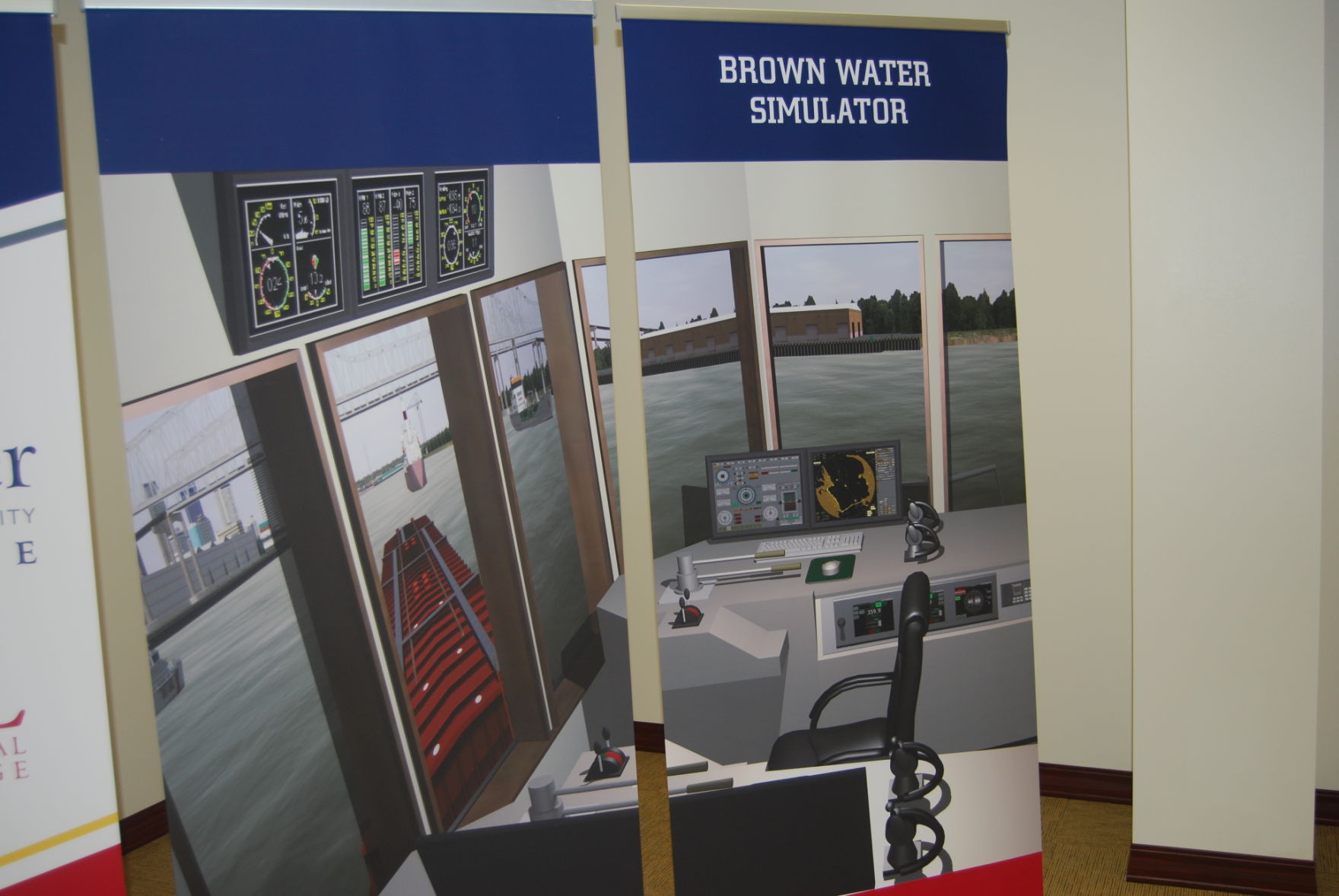Testroet-Bergeron named BTNEP director; begins Jan. 5
November 26, 2014
Bond hearing in Terrebonne court exposes potential new victim in case
November 26, 2014Oil industry and maritime workforce educational opportunities increase with the new Marine & Petroleum Safety Training Center.
Fletcher Technical Community College and South Central Louisiana Technical College are pooling their resources for a state-of-the-art center.
“We have two colleges working together, and it has never been done before,” Fletcher Chancellor Earl Meador said. “We are showing that colleges can work side-by-side. A lot of the staff you see out there, some work for Fletcher and some work for South Central. You can’t tell the difference.”
The partnership is designed so the schools can share assets and give folks in the workforce the best possible training without having to travel out of the state.
“We have a regional economy and a regional workforce. They can be trained regionally. We have to serve those people,” Meador said. “One thing we want to convey is that we are a community effort that wants the same thing.”
A grand total of 70 courses will be offered ranging in both safety training and marine training.
One of the most anticipated courses involves escaping from a submerged helicopter. A $375,000 helicopter cockpit paid for by SCL is being transported from Europe. The installation date is set for Dec. 12.
The helicopter will be dropped into a 12-foot deep pool located inside the facility and then is flipped upside down while the people inside escape.
“They will do the lecture and do it in the field. It is now 60 percent hands-on.” Dean of Marine Operations, Capt. Carl Moore said. “They do the touching, grabbing and put the suits on. What we try to do is use real life equipment.”
The facility will also come equipped with a concrete fire-fighting station in the field next to the building. The center is currently accepting bids on that project and will begin construction sometime in the near future.
“We won’t have to worry about it being muddy. It will be safer and a nicer environment. The Morgan City location already has one like that. We are raising the bar,” Meador said. “When we talked to leaders in the industry, they wanted more modern facilities. We have that money raised, set aside and working on the bids right now.”
While those two projects are in the works, the schools are looking to obtain state-of-the-art simulators for students who want to drive a vessel.
“The towing companies have come to us and want us to put together a simulation package for the towing industry so we have simulation rooms,” Moore said.
The simulators will have brown water and blue water options.
Brown water simulators are for folks who plan to drive vessels in populated areas such as the Mississippi River or the Intracoastal Waterway of Houma.
The blue water simulator pertains to those who would be controlling vessels out in the open such as the Gulf of Mexico.
Both Fletcher and South Central already have blue water simulators.
Meador said they are flirting with the idea of moving the simulator at South Central either to the Fletcher campus on La. Highway 311 or the training center.
“Unfortunately it is in a wooden portable building so we are looking to bring that simulator to our Hwy. 311 site or here,” the chancellor said. “We haven’t quite decided that yet.”
Captains come in to drive the simulators before companies send their hopefuls through the test.
“Lets say they hire someone who has never been on a boat before, the captain will come in and run through different scenarios in the simulator. The software will put the parameters and say this is how it has to be done,” Moore said. “The hopeful will come in and run the same simulations based on what the captain did, and that is how it is graded. They can then decide if they want you to come on and steer the boat depending on how you did in the classroom here.”
Moore added, “A company may say in order to get a license, you have to handle the vessel steering in a straight line with heavy wind. You may deal with that in the summer for two straight weeks, so we can create that right here.”
The workforce has shifted to simulation training as the technology becomes available because the damages for a wrong turn on a simulator obviously are not as costly.
“You can pass the test and go put the time in on a boat, but you may have been painting and chipping. They don’t know what you did so now you get a license and a multimillion dollar piece of equipment that you have never steered before. So companies make you use simulation training,” Moore said. “If that guy comes here and runs into another ship, so what, it is just mark on him. That is a lot of money in damages if he does that in the field.”
Even with all of the technology, Meador said it simply could not make up for the impact of knowledgeable instructors.
“If we hire an instructor that is not good enough and tell the students they are safe and then they get hurt offshore, who’s fault is that? Ours,” Meador said. “We take that responsibility very seriously so we make sure we do everything we can to raise our safety standards.”
The Marine & Petroleum Safety Training Center hopes to obtain a brown simulator to give future captains a true experience driving a vessel on the Mississippi River.










